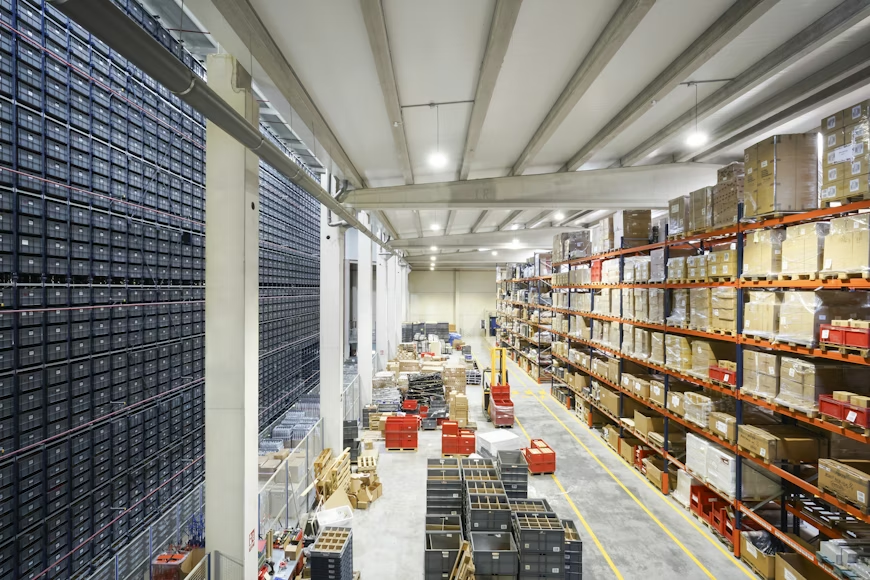The United States maintains a diverse landscape of tariffs, with specific duties fluctuating significantly based on the nature of the imported goods and their origins. Despite the overall trend toward some of the lowest tariff levels in history, certain categories, notably apparel and clothing, bear the weight of heftier tariffs.
In the past year, import duties accounted for $33.1 billion, representing 1.4% of the total value of all imported goods. However, it’s essential to note that only 30.4% of the total imported goods were subject to duty, with the remainder entering the U.S. without duty fees.
This complexity extends to the Harmonized Tariff Schedule of the United States (HTS), a comprehensive document spanning thousands of distinct import categories across 3,713 pages. The HTS delineates precise tariff rates, illustrating the variance in duties based on specific materials and compositions, such as the differences in tariffs for items like artificial flowers made from plastic, feathers, or man-made fibers.
In general, larger import categories typically carry lower tariff rates, contrasting with smaller categories subject to higher rates. Clothing stands out as an exception; the classifications of “apparel and clothing accessories” constituted a significant portion of imports, with approximately $64 billion of the $80.6 billion imports being dutiable, carrying average tariffs of 18.7% and 15.8% for knitted or crocheted clothing and non-knitted items, respectively. Footwear closely follows with nearly all $25.5 billion worth of imported footwear subject to duty, at an average rate of 11.9%.
Conversely, electrical machinery and equipment, the largest import category, boasted lower average duties. While nearly $347 billion worth of such goods entered the U.S., only 21.3% were taxed, with an average duty of 2.7%. Similarly, computer equipment and industrial machinery, the subsequent significant import category at $339.4 billion, saw only $57 billion taxed, with an average rate of 3%. Even “vehicles and parts,” accounting for $292.6 billion in imports, generated minimal tariff revenue of 2.7% of the dutiable value.
Notably, President Donald Trump’s administration imposed tariffs on specific imported steel and aluminum products, previously duty-free. These measures affected imports totaling $29.3 billion and just under $17 billion, respectively.
Contrary to common expectations, minerals and metals historically faced lower tariffs in the U.S., with an average most-favored-nation applied duty of 1.7%, ranking relatively low compared to other goods.
Comparatively, the U.S. imposes higher import taxes on petroleum, ranking at 6.5% on average, in tandem with certain other countries. Similarly, tariffs on imported sugars and confectionery stand at an average of 16.4%. However, these rates pale in comparison to some nations’ tariffs, such as Turkey’s imposing 93.4% on similar goods.
Internationally, high import duties are often seen on beverages and tobacco, reflected in duty-free shops at airports. The average most-favored-nation applied tariff for this category sits at 35.8%, considerably higher than the U.S. average of 19.1%. Notably, Egypt leads the pack, imposing an 803% average applied tariff on beverages and tobacco.
Understanding the diverse landscape of U.S. tariffs unveils the nuanced dynamics and varied rates across different import categories, illustrating the multifaceted nature of global trade tariffs.
Breaking supply chain news is just a click away at The Supply Chain Report. Enhance your knowledge of international trade at ADAMftd.com with free tools.
#USTariffs #ApparelTariffs #ImportDuties #HarmonizedTariffSchedule #USImports #TradePolicies #GlobalTrade #ElectronicsTariffs #FootwearDuties #SteelTariffs #AluminumTariffs #ImportTax #CustomsDuties #BeverageTariffs #InternationalTariffs #TradeComplexities #USImports2024 #FootwearImports #PetroleumTariffs #USTradeLandscape

















